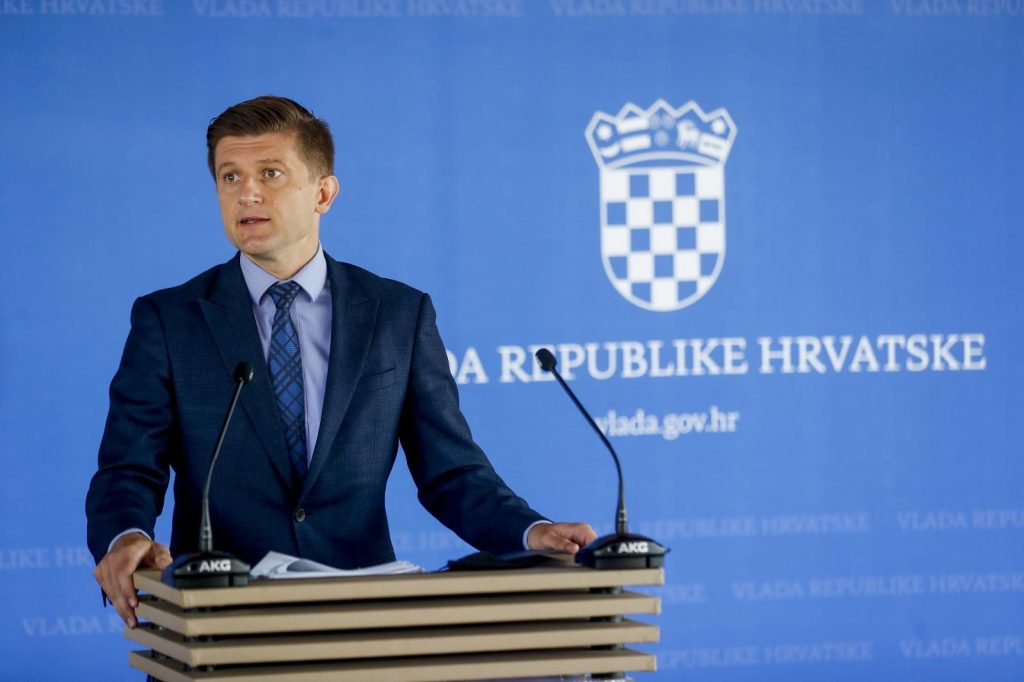Addressing a news conference at which he, together with Prime Minister Andrej Plenković and Croatian National Bank (HNB) governor Boris Vujčić, outlined a draft act on the introduction of the euro as legal tender in Croatia, Marić underscored the obligation to display prices both in kuna and euro from 5 September through the whole of 2023.
The draft act also envisages some exemptions from this obligation when there are physical limits for such displays or excessive costs. Thus, stands in farmers’ markets, newsstands, electronic displays at filling stations, or taximeters will be exempted from this obligation. Also, commodities with prices already printed on them will be sold until stocks last.
However, they are not exempted from issuing invoices and bills both in the kuna and the euro, Marić said.
The authorities today published guidelines for the adjustment of the enterprise sector during the process of switching to the euro.
The guidelines have been prepared by the coordinating committee for the adjustment of the economy and consumer protection, with the economy ministry at its helm.
Undue price rises forbidden
The document highlights the major principle that undue price rises in the euro changeover are forbidden.
Marić admitted that the whole matter had not been regulated by law and called on all actors to join in the fight against any undue price rises.
Fulfilling Maastricht criteria
The minister recalled that Croatia could enter the euro area on 1 January 2023, provided that it fulfilled the convergence criteria, and a final decision on the assessment of Croatia’s performance is expected in July 2022.
One of the Maastricht criteria refers to sound and sustainable public finances, which includes trends in the public debt and deficit. Marić said that this was under control and that their reduction was being conducted at an adequate rate.
Also, concerning price stability as a criterion, the inflation rate cannot be more than 1.5 percentage points above the rate of the three best-performing member states.
Marić said that inflation trends should not undermine the entire process.
HNB Governor Vujčić also believes that the convergence criterion about price stability would be met.
The reference value for the inflation rate has never been under the average rate of inflation in the eurozone, Vujčić explained.
Prices of consumer goods and services in Croatia, as measured by the consumer price index, increased by 5.5% in December 2021 compared with December 2020, while in the whole of 2021 they rose by 2.6% year on year, the State Bureau of Statistics (DZS) said today.
Regardless of the acceleration of inflation in recent months, Marić said that Croatia’s inflation rate was still rough around the average of the euro area or slightly below this average.
Last Thursday, Marić said that the government had revised its inflation growth projection for this year up to 3.5%, adding that VAT cuts were being considered as part of a set of measures aimed at buffering energy price hikes. Speaking to the press, Marić said then that the government was following developments with price hikes.
He said inflation accelerated in recent months and that its growth in December might exceed 5%, which would be visible at the start of this year.
That prompted the government to revise its projection to 3.5%, up from the 2.5% increase forecast earlier, he added.
The minister said that according to available data and expectations, higher inflation rates were expected in the first months of this year, “after which there should be a convergence to an average 3.5%.”
Besides food, the main focus is on energy prices given the price trends of raw materials at the European level, he said, adding that the price of gas for households would be corrected as of 1 April.
He said the government would come up with a package or individual measures aimed at buffering the increase so that living standards were not affected in a major way.
For more, check out our dedicated politics section.










